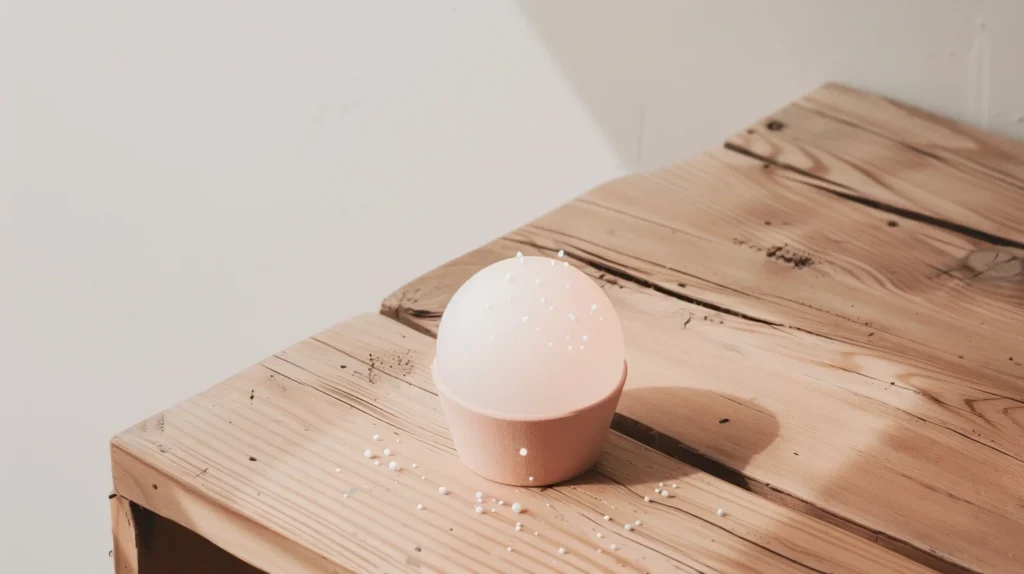
Major depressive disorder affects roughly 5% of Canadians each year, and up to 50% of those individuals fail to achieve full remission with first-line medications. Still, hope is starting to show up where we least expected it in medicine. Low-dose ketamine, once relegated to operating theatres, has rapidly become one of the most researched and clinically promising interventions for treatment-resistant depression (TRD).
The momentum is not just academic. In a real-world sample of 11,441 adults receiving at-home, telehealth-supported sublingual ketamine, more than half of those with moderate baseline depression achieved a clinically significant response. Meanwhile, a separate systematic review covering 79 studies found that 45% of patients responded to ketamine and 30% reached full remission. When I began my medical career in Thunder Bay, I could only dream of numbers like these for patients who had already “failed” multiple depression treatments.
I think that what truly sets ketamine apart is its speed. Traditional antidepressants may take six weeks to lift mood – an eternity when suicidal ideation hangs. Ketamine can catalyze relief within hours, offering what I can only describe as a therapeutic window of opportunity. If you unite that biochemical opening with expert psychotherapy and thorough after-care, you can, in my experience, turn a momentary relief into long-term recovery. That is precisely the model we use at Field Trip Health.
The Evolution of Ketamine: From Operating Room to Therapy Room
You may already know ketamine as an anaesthetic or an analgesic of last resort in rural emergency settings. Its journey into psychiatry began almost by accident. Researchers at Yale, while probing glutamatergic hypotheses of depression in the 1990s, observed that sub-anaesthetic ketamine doses produced rapid mood elevation. Over the next two decades, successive randomized controlled trials confirmed and refined those early observations until, in 2019, the FDA approved intranasal esketamine for TRD.
I can tell you that regulatory milestones often lag behind clinical adoption in Canada. Our college guidelines still classify racemic ketamine for depression as “off-label,” but the science has become impossible to ignore. A patient-level meta-analysis showed a three-fold increased likelihood of response and a 2.5-fold higher probability of rapid remission within 24 hours when compared with placebo. From my vantage point as both a clinician and a researcher, that qualifies as a paradigm shift.
Pharmacology 101: How Does Ketamine Work?
So why does ketamine act so much faster than selective serotonin reuptake inhibitors (SSRIs)? The answer lies in its unique interaction with the glutamatergic system. At sub-anaesthetic doses, ketamine blocks NMDA receptors on GABA interneurons, unleashing a surge of glutamate. That surge stimulates AMPA receptors and triggers a cascade culminating in the release of brain-derived neurotrophic factor (BDNF).
BDNF is essentially fertilizer for synapses, driving proliferation and remodeling in prefrontal-limbic circuits that govern mood. Simultaneously, ketamine modulates opioid and monoaminergic pathways, which may explain its analgesic and anxiolytic properties. In clinical terms, you can see mood scores drop within hours, and functional MRI studies show increased connectivity in networks previously blunted by depression.
I know that neurobiology can feel abstract, but think of it this way: ketamine rapidly de-ices neural pathways that have been frozen by chronic stress and maladaptive learning. When the ice melts, thoughts and emotions can flow differently, creating an opening for psychotherapy to rewrite limiting beliefs.
What the Data Say About Ketamine Treatment for Depression
Let’s anchor the discussion in hard numbers. A systematic review examined 18 Randomized Controlled Trials (RCTs) and confirmed ketamine efficacy across diverse degrees of treatment resistance – even though the absolute response rate declined slightly with each additional failed medication trial. If you treat primarily TRD patients, that nuance matters because it underscores the need for early intervention with ketamine rather than waiting until all other options are exhausted.
Community data are equally persuasive. Another study followed 2,758 adults receiving intravenous (IV) ketamine in 10 outpatient clinics and reported large effect sizes for both depression (Cohen’s d = -1.56) and anxiety (d = -1.17). Most notably, 80% of that cohort endorsed active suicidal ideation before treatment. After induction, half had none. In fact, I’d argue that this anti-suicidal effect may be ketamine’s single most valuable contribution to psychiatry.
Finally, tolerability deserves mention. A comprehensive review in EClinicalMedicine found that all-cause dropout rates for ketamine mirrored placebo, dispelling fears that dissociation or transient hypertension would drive patients away. When adverse events do occur – primarily mild nausea, dizziness, or transient blood-pressure spikes – they are usually short-lived and manageable with simple supportive measures, something I see in our clinics.
Selecting and Screening Patients for Ketamine Treatment

You may ask: “Which of my patients should I refer?” In my experience, the ideal candidate is an adult with a confirmed diagnosis of major depressive disorder who has failed at least two adequate medication trials and has had at least one course of evidence-based psychotherapy. That said, the landscape is broadening. We treat bipolar depression (with mood-stabilizer coverage), postpartum depression, and even complex PTSD where intrusive memories keep antidepressant gains at bay.
Absolute contraindications remain few but critical. Pregnancy, uncontrolled hypertension, active psychosis, and untreated mania are red lines. Relative contraindications – like moderate cardiovascular disease or a history of substance misuse – require risk-benefit calculation rather than outright exclusion. Screening tools such as the MINI or SCID, combined with cardiology clearance when indicated, form the backbone of our intake process. I did once turn away a patient with an intracranial aneurysm because even a transient blood-pressure spike posed unacceptable risk. That decision was difficult for her, but safety must remain paramount.
The Field Trip Health Ketamine Treatment for Depression Model
When I founded Field Trip Health, my intention was not just to dispense ketamine but to create a therapeutic ecosystem. Each patient begins with a preparation session where they clarify intentions, learn breath-work, and co-design measurable goals with our therapists. We then deliver six ketamine sessions over three to four weeks, each followed by integration psychotherapy within 48 hours.
It is my conviction that the atmosphere truly counts. We’ve engineered our clinics to feel closer to a boutique wellness retreat than a hospital ward. Weighted blankets, soft lighting, and curated music are not décor flourishes. They are evidence-based levers to cultivate the “soft fascination” state conducive to neuroplasticity. Yet, behind that serene façade stands a physician-led safety net. Every session is supervised by an ACLS-certified doctor or nurse practitioner, with real-time monitoring of blood pressure, heart rate, and oxygen saturation. That dual emphasis on comfort and clinical rigor differentiates us from purely therapist-run programs and resonates with the health-conscious, premium-care-seeking adults who make up our core demographic.
Inside a Ketamine Treatment Journey

Ketamine treatment at Field Trip Health is not a one-size-fits-all experience. Instead, it’s a carefully curated journey, meticulously designed to support your mental and emotional well-being. Here’s a brief overview of what you can expect:
Step 1: Preparation.
Rather than hand patients a brochure, we sit down and map out everything – from the music playlist to contingency plans should uncomfortable emotions arise. This collaborative approach lowers anxiety and primes the therapeutic alliance. Honestly, I believe that strong preparation shapes at least 30% of the results before any ketamine is even given.
Step 2: First Session.
Most individuals receive ketamine via intramuscular injection, but other options are available too. Within five minutes, a sense of detachment sets in, and vivid imagery often follows. We provide eye masks and noise-canceling headphones to minimize external distractions. As clinicians, you and I know how critical vital-sign monitoring is, so while the patient’s mind explores new terrain, our nurses quietly track hemodynamics every three minutes.
Step 3: Immediate Debrief.
Once the dissociative effects recede, usually in 30-45 minutes, I invite patients to record voice notes or journal. Short-term memory may be patchy for another hour, and capturing insights early preserves material for integration therapy.
Step 4: Integration.
Integration is where the neuroplastic window meets cognitive restructuring. We use harm-reduction frameworks, Internal Family Systems, or Acceptance and Commitment Therapy depending on patient preference. One client recently reframed a core belief – “I am broken” – into “I am rebuilding.” Her PHQ-9 tumbled from 22 to 6 over the next month. Cases like hers affirm my conviction that ketamine without reflection is a missed opportunity.
Ketamine Safety and Risk Mitigation: What You Need to Know
You will inevitably encounter concerns around side effects.
Transient hypertension tops the list. We mitigate that risk by pre-screening blood-pressure trends and keeping nicardipine on standby.
Nausea affects perhaps 10% of patients; prophylactic ondansetron usually suffices.
Psychotomimetic experiences are rarer than widely advertised but can be distressing if unanticipated. Clear coaching – “Trust the process, allow insight to unfold” – often converts anxiety into curiosity.
Adverse events across large cohorts remain low. The Journal of Affective Disorders reports adverse-event rates of 3–4.8% in a massive telehealth sample, and those events were predominantly mild neurologic or psychiatric phenomena.
A network meta-analysis of 72 randomized controlled trials found that ECT, Ketamine, Esketamine, and Psilocybin work best as first treatments because they balance how well they work with how easy they are to tolerate. This is significant for patients who are worried about cognitive side effects associated with these therapies.
Let pragmatic vigilance, rather than alarmism, guide risk management.
Ketamine Treatment for Depression: A Lived Experience
“Each time was different and there was always something else that was waiting, helping me to unlock various parts of myself and my ability to be present.” – Kristine.
Whenever a new patient weighs the investment, time, emotion, and cost, Kristine’s words echo through our Toronto clinic. She arrived skeptical, having never tried psychedelics, and left three modules later with a toolkit for stress resilience she now teaches her teenage son.
Depression is an insidious thief, quietly robbing individuals of precious years, eroding the fabric of relationships, and, in the most heartbreaking instances, claiming lives altogether. I have stood witness as too many patients, desperate for relief, approach the well-lit front door of medicine only to discover the rooms beyond are windowless, offering little more than sterile routine when what they truly need is hope and illumination.
For me, the most rewarding moment is not when a PHQ-9 score drops but when a patient looks up, sometimes with tears in their eyes, and says, “I can feel joy again.” That return of authentic emotion – the spark of hope reignited after years of numbness – reminds me why I entered this field and why we continue to push boundaries in mental health care.
Frequently Asked Questions
Esketamine is the FDA approved nasal spray form, while ketamine infusion uses the full molecule off label. Clinical trials show both treat depression effectively, but esketamine requires certified medical facilities and costs more than compounded ketamine products from health care providers.
After six infusions, most patients with treatment resistant depression need maintenance ketamine therapy every 2-6 weeks. Mental health conditions vary, so your primary care physician and psychiatry team will customize the schedule based on depression scores and symptom return.
Yes, ketamine treatment helps post traumatic stress disorder, chronic pain, and anxiety. Clinical trials from Yale and national institutes show ketamine works for various psychiatric disorders, though treatment resistant depression remains the primary FDA approval indication.
IV infusion at medical facilities offers closer monitoring of blood pressure and immediate medical care. While some compounded ketamine products allow home use, certified doctor’s offices provide safer treatment for severe depression and suicidal ideation with proper medical supervision.
Unlike regular antidepressants taking a few weeks, ketamine works within hours to days. Most patients notice improved depression severity after 2-3 sessions. Suicidal thoughts often decrease rapidly, though full antidepressant effects may take the complete six infusions series.
Ketamine treatment for depression at low doses in certified doctor’s offices has minimal addiction risk. Medical professionals monitor for substance abuse patterns. Clinical care protocols and proper medical treatment significantly reduce addiction potential compared to recreational ketamine use.
About the Author

Dr. Mario Nucci MD CCFP is a licensed Family Physician with a passion for mental health and the development of new therapies. He is actively engaged in research with a faculty associate professorship at Northern Ontario School of Medicine, and research collaborations with the University of Ottawa, University of Calgary, Lakehead University, Concordia University and Vancouver Island University.
Dr. Nucci is the founder of Bay and Algoma Health Centre in 2019, a walk-in and addiction medicine clinic. He founded the Canadian Centre for Psychedelic Healing in 2019, now operating as Field Trip Health, providing cutting edge mental health care in Toronto, Montreal, Vancouver, Ottawa, Hamilton, Kitchener-